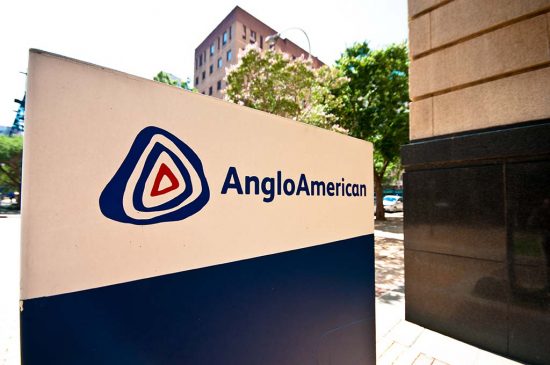With the vast majority of the world’s diamonds estimated to be conflict-free following the development of certification procedures under the Kimberley Process, the mining industry is now developing a blockchain-based solution to track the supply chain of the precious stones.
The industry still faces challenges from insurance fraud, the financing of global pipelines and the tampering of official certification. An initiative conceived two years ago by De Beers, the diamonds subsidiary of UK-listed miner Anglo American, has expanded to incorporate other leading manufacturers and retailers, including Russian miner Alrosa and United States-based retailer Signet Jewelers.
Tracr was conceived by De Beers in 2017 as a comprehensive mine-to-customer traceability solution for the entire diamond industry, the illegal trade of which had previously funded brutal wars and human rights abuses for decades. Its goal was to give consumers confidence that registered diamonds are natural and conflict-free, as well as improve visibility and trust within the industry and enhance efficiencies across the diamond value chain.
“Tracr is built for and by the industry to ensure it does not disrupt current way of working, whilst establishing diamond traceability, provenance and authenticity. This will ultimately enhance consumer confidence in a diamond’s attributes,” the company told Fastmarkets.
“The overall aim is to be able to digitally track a diamond’s journey from mine to consumer,” the company said.
Anglo American owns 85% of De Beers, which produces about a third of the world’s rough diamonds by value. The remaining 15% of De Beers is owned by the Botswana government.
Tracr’s pilot project, involving a small group of industry participants, launched in January 2018 and tracked 100 diamonds from mine to retailer using blockchain technology. The manufacturers involved in the pilot were Diacore, Diarough, KGK Group, Rosy Blue NV and Venus Jewel.
Since then, the platform has added Alrosa, Signet Jewelers and Hong Kong-based Chow Tai Fook Jewellery Group.
Challenges
Despite the Kimberley process and other certification stages within the diamonds industry, Tracr acknowledged that tracking every step in a diamond’s journey as it passes from mine to retail had not previously been possible.
“While certain aspects of an individual diamond – including that it is conflict-free, natural and its physical attributes – can be tracked, there hasn’t been the ability to track all of these stages in one location to provide consumers with the full story of their diamond,” Tracr said.
“A platform is therefore required to address challenges around provenance, traceability, authenticity and compliance, all whilst ensuring security and privacy controls are in place over the data. Such a platform will establish an end-to-end baseline of trust, which the industry has not previously had,” the company added.
Paper-based processes continue to hinder the transparency and authenticity required in the diamonds trade. There have been instances of fraudulent Kimberley Process certificates and fake insurance claims, with no viable way for insurers to guarantee the authentic product has been lost or stolen, or for governments to collect fair export taxes when diamonds are smuggled out. Consumers meanwhile have no way of knowing that they have purchased counterfeits or unethically-sourced stones.
These issues also deter banks and financiers from providing capital to the diamonds supply chain.
Tracr said the blockchain initiative is designed to overcome these challenges by connecting the physical and digital worlds along the supply chain, using artificial intelligence to identify and verify a diamond’s attributes, and using blockchain to securely create, manage and transfer digital assets. Blockchain is also permissioned, providing a high level of security and privacy by ensuring participants control of the level of detail they share.
Tracr declined to provide details of the number of diamonds that have been through the platform to date but noted that it is designed to accommodate the entire industry, including past, current and future production.
In partnership with non-governmental organization the Diamond Development Initiative, Anglo American’s De Beers is also gearing to trial GemFair, a pilot project that aims to create a secure and transparent route to market for ethically-sourced artisanal and small-scale mined (ASM) diamonds.
Initially to run in Sierra Leone, the technology – an app – will be integrated into the Tracr blockchain platform if it proves successful. GemFair has said that with minor tweaks to the software, the solution could potentially be used for other minerals in the future.
Similar issues are faced by the cobalt market, which has continued to weaken in 2019 to date. Fastmarkets’ price assessment for standard-grade cobalt stands at $17-19.30 per lb as of Friday February 15, down from $32-32.60 per lb in early December.
Peer platforms
There are other blockchain initiatives in diamonds.
Everledger, for instance, uses blockchain technology by IBM to digitally certify diamonds traced through the Kimberley Process certification process. The company, which also uses blockchain to track wine, fine art and colored gemstones, initially started with the polished diamond industry.
It has the provenance of over 2 million diamonds cryptographically-certified on the blockchain.
Everledger has also partnered with the Singapore Diamond Investment Exchange, the first physically-settled diamonds exchange, to authenticate and secure record-keeping services for trading diamonds.
Similarly, IBM has developed TrustChain to track six styles of diamond and gold engagement rings on the blockchain network, with the goal of making the jewelry accessible to consumers in participating retails stores. Members of the initiative are precious metals refiner Asahi Refining, US jewelry retailer Helzberg Diamonds, precious metals supplier LeachGarner, jewelry manufacturer Richline Group and independently verified UL.
The goal is to convince other companies to adopt the same process and make blockchain technology common practice in the diamonds industry.




